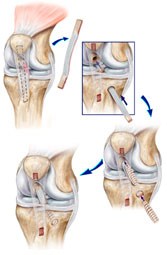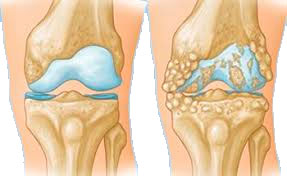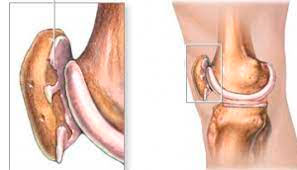KNEE
MENISCAL INJURIES
Meniscal injury is a common pathology in the knee, and can limit physical activity and lead to early arthritic deterioration. Meniscal tears can be divided into degenerative and traumatic. Degenerative meniscus tears usually appear after 55-60 years old, while traumatic meniscus tears occur at a younger age. Nowadays, both magnetic resonance imaging and a good clinical examination are key to its detection.
Meniscal injuries can significantly decrease the patient’s quality of life, limiting the activities of daily living. With arthroscopy, these injuries can be treated, allowing the patient to recover satisfactorily.
ANTERIOR CRUCIATE LIGAMENT INJURY
Anterior cruciate ligament injury is common in the population, not only in professional athletes but also in people who play sports regularly. It is the main stabiliser of the knee. It can rupture partially (less common) or completely.
Its injury can cause a major restriction in the sport practice. Currently, arthroscopic repairs using autografts (patellar tendon, hamstring, quadriceps) are the treatment of choice. This must always be combined with a specific physiotherapy and rehabilitation plan to ensure optimal recovery.


POSTERIOR CRUCIATE LIGAMENT INJURY
The Posterior Cruciate Ligament (PCL) is the strongest ligament of the knee and is the main stabiliser of the posterior translation of the tibia relative to the femur.
It is usually caused by forced hyperflexion or hyperextension of the knee, and is frequently associated with anterior cruciate ligament injury or collaterals.
Its isolated injury is usually treated conservatively with good results. If the patient has persistent symptoms of instability after the injury, surgical treatment is the treatment of choice.
KNEE OSTEOARTHRITIS
Osteoarthritis is the most common joint disease and one of the main causes of medical consultation. It is the most important cause of disability in elderly people. It is a degenerative disease resulting from changes in the mechanical properties of cartilage and affects other joint structures such as the subchondral bone, joint capsule and synovial membrane. Although there is no clear cause for the onset of osteoarthritis, various factors such as overweight have been suggested. It triggers inflammatory phenomena, which often cause osteoarthritis to produce symptoms such as pain and impairment of the mobility and normal functioning of the joint, which leads to progressive disability in everyday activities.
Initial treatment should focus on weight reduction and pain control medication. Viscosupplementation with hyaluronic acid and biological therapies such as treatment with platelet growth factors and mesenchymal stem cells may slow and modify the disease progression.
Surgery (total knee prosthesis) is indicated if pain and functional limitation persist despite conservative treatment, with excellent results.

CHONDROMALACIA PATELLAE
Chondromalacia patella is an articular cartilage injury that affects the kneecap and causes pain in the front of the knee. It is classified into four grades according to its extent and severity. Pain in the anterior aspect of the knee or patellofemoral syndrome, which is one of the most frequent traumatological processes in athletes and non-athletes, is due to multiple causes. After diagnosing the degree and cause, the patient should receive specific and individualised treatment.
Viscosupplementation with hyaluronic acid and other biological therapies are often effective for knee pain control, and are the first choice treatment for persistent pain that does not improve over time.

TELL US ABOUT
YOUR CASE
If you are suffering from a traumatic injury,
you can tell me about your case here and
I will try to answer you as soon as possible.